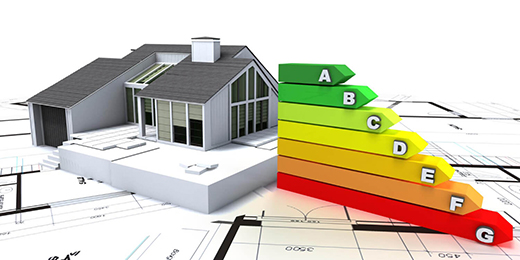How Is An EPC Calculated?

Energy Performance Certificate Nationwide Service
- Flexible hours, book a time that suits you
- Same day bookings
- Pay us by Card, PayPal, Google Pay, Apple Pay or Pay on-site
Choose property type:

Recently booked jobs


Ηow Is An EPC Calculated?
An Energy Performance Certificate (EPC) is a document required by law whenever a property is built, sold, or rented in the UK. The certificate contains information about the property’s energy efficiency, and it helps potential buyers or renters understand the running costs associated with the property.
The EPC report includes an energy efficiency rating from A (very efficient) to G (inefficient). It also provides recommendations on how to improve the property’s energy efficiency. So how is an EPC calculated?
Here, we will explore how EPCs are calculated in the UK, what factors are taken into account, and what you can do to improve your property’s rating.
Who Can Calculate An EPC?
An accredited assessor calculates EPCs in the UK. The assessor will consider the type of property, its age, size, and location. They will also consider the energy use of the building and any measures that have been put in place to improve energy efficiency.
The resulting rating will be valid for ten years.
How Is An EPC Calculated?
The EPC for a building is calculated using a Standard Assessment Method (SAM). SAM considers the property’s build quality, its size and shape, the way it is used, the heating and hot water system, the type of glazing and insulation installed, and other factors. The EPC rating is then used to produce an energy efficiency indicator (EEI), which is a measure of how energy-efficient the building is.
The EPC calculation assesses the building’s ‘fabric energy efficiency’. This calculation considers the thermal conductivity of materials used in the construction of the property and its insulation levels. The external dimensions of the building are also taken into account, as this can affect how much heat is lost through walls, windows and doors.
Next, the ‘internal environment’ assessment looks at things like airtightness (which can impact draughts and heat loss), ventilation (which affects moisture levels and indoor air quality) and lighting (which affects both heating costs and carbon emissions).
Furthermore, the ‘renewable technologies’ assessment looks at any renewable energy sources used to help power the property, such as solar PV panels or wind turbines. This information is then used to produce an EPC rating for the property on a scale from A (very efficient) to G (inefficient).
When the EPC survey has been completed, your energy performance will be calculated, and an EPC Certificate will be produced. The EPC Certificate will be published to the government register within 24-48 hours of the energy assessor leaving the premises. A copy will also be sent directly to you via email. The EPC Certificate will also contain recommendations for improving your building’s EPC rating.
What Information Will The Energy Assessor Need, And How Is An EPC Calculated?
An energy assessor will need some information to calculate your EPC. They will need the dimensions of your property, details about the heating and hot water system, and information about the insulation and glazing. The energy assessor will input this information into a software program that will generate an EPC for your property.
Hire A Professional Energy Assessor!
The EPC calculation process is relatively straightforward and can be completed by any qualified assessor. However, it’s important to remember that the EPC is just one tool that can be used to assess the energy efficiency of a building.
Many other factors need to be considered when making energy efficiency improvements, such as cost, feasibility, and impact on occupants. Ultimately, the decision about whether or not to make changes should be based on a comprehensive analysis of all factors involved.



